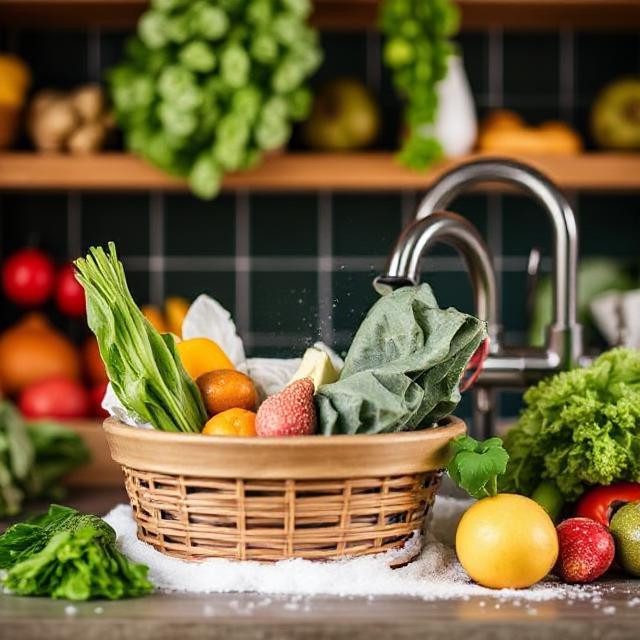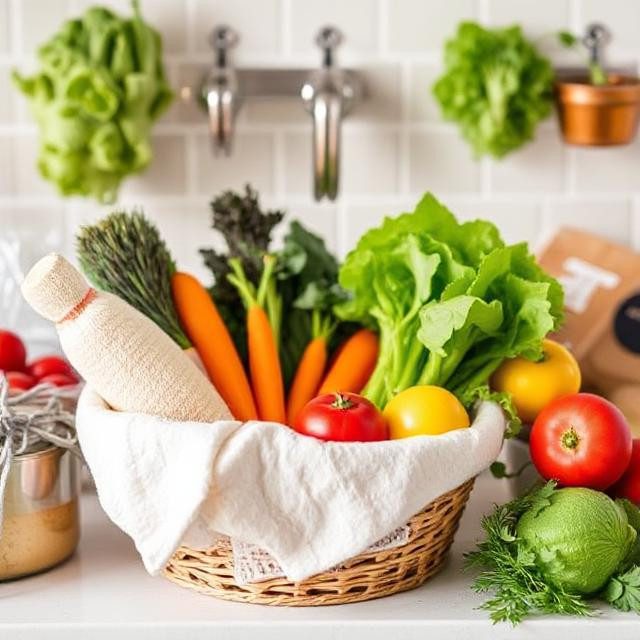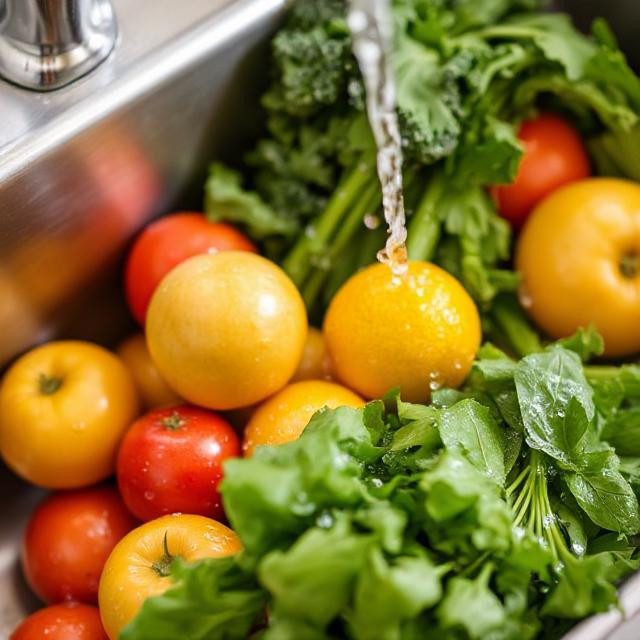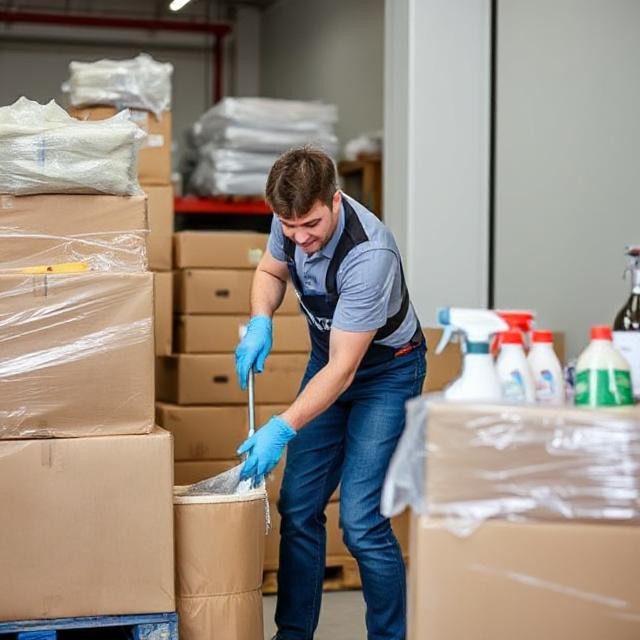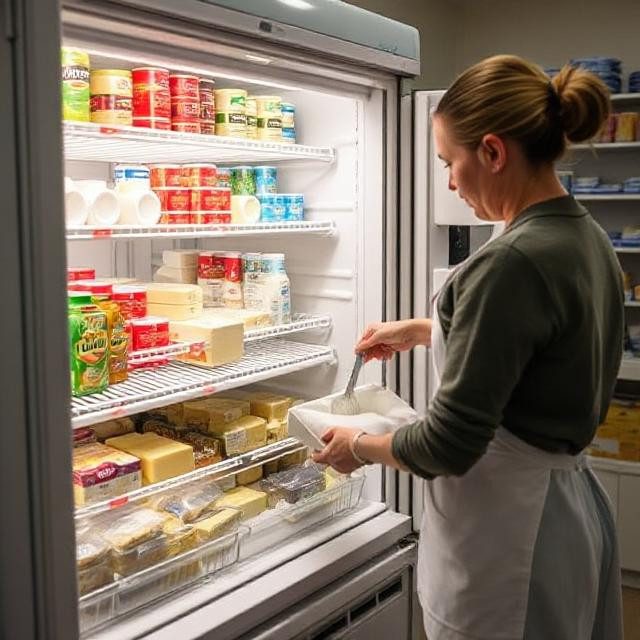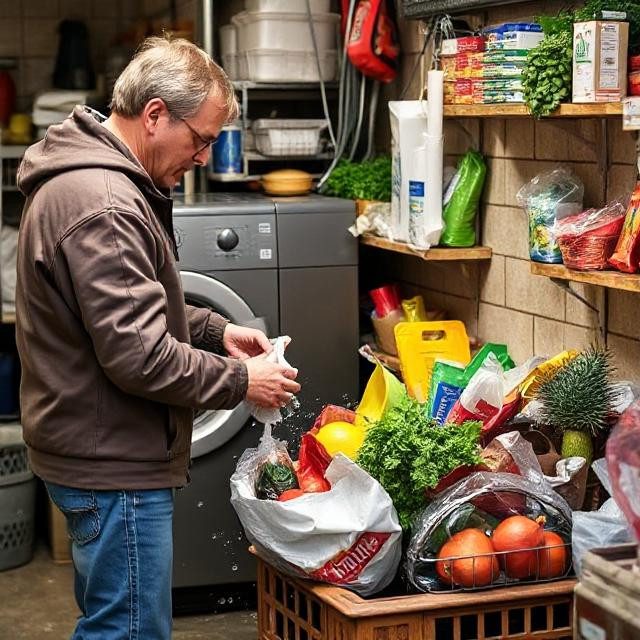In recent years, the importance of food hygiene has come into sharper focus, especially with the global pandemic highlighting the significance of cleanliness. While we typically focus on preparing food in a clean kitchen environment, one essential step is often overlooked: cleaning the groceries we bring home. Items we purchase from grocery stores whether fruits, vegetables, or packaged goods can carry harmful bacteria, pesticides, and other contaminants. Learning how to properly clean your groceries not only reduces the risk of foodborne illnesses but also ensures a healthier lifestyle. In this guide, we will walk you through why it’s important to clean your groceries, how to do it effectively, and the best methods to use for different types of food.
Why You Should Clean Your Groceries
The moment groceries leave the store shelves, they are exposed to various factors that may pose health risks. These include:
1. Pesticides and Chemicals: Many fruits and vegetables are treated with pesticides, which help protect crops from insects and diseases but can leave residues on the produce. Washing helps reduce these residues, which can be harmful when ingested over time.
2. Bacteria and Viruses: While foodborne pathogens are most often associated with raw meat, they can also be found on other food items, such as produce and packaged goods. In fact, these contaminants can come from improper handling or storage by manufacturers and suppliers.
3. Contaminated Surfaces: Think about the many hands that touch your food as it makes its way through the grocery store shelves, shopping carts, and even cashier counters. While most stores have strict protocols for cleanliness, some contamination can still occur.
4. Packaging Materials: Packaging often carries germs from the production line to the consumer. For example, boxed goods, cans, and bottles may have been handled in environments that aren’t completely sterile, leading to potential contamination.
By cleaning your groceries properly, you’re helping reduce the chances of ingesting harmful substances. Let’s look at how to handle the cleaning process effectively.
How to Wash Your Groceries: Best Practices
The approach to cleaning your groceries varies depending on the type of item you’re dealing with. While it’s relatively simple to wash fruits and vegetables, packaged goods and other non-produce items need a more tailored approach. Below are specific methods for each category:
1. Washing Fruits and Vegetables
What You will Need:
– Clean water
– A vegetable brush
– Baking soda
– Vinegar
Steps to Follow:
Step 1: Inspect: Before cleaning, check for any damaged or bruised spots on the produce, as these can harbor bacteria. Discard any items with visible damage.
Step 2: Rinse with Water: For most fruits and vegetables, the simplest and most effective method is to rinse them under cool running water. This helps remove dirt, bacteria, and pesticides.
Step 3: Scrub if Necessary: For thicker-skinned produce like potatoes, cucumbers, and carrots, use a vegetable brush to scrub the surface. This is especially important for root vegetables.
Step 4: Soak for Hard-to-Clean Produce: For leafy greens (such as lettuce or spinach), soak them in a bowl of water for a few minutes. Agitate gently to dislodge dirt or grit, then rinse thoroughly under running water.
Step 5: Use a Vinegar Solution (Optional): If you want to remove pesticide residues more effectively, you can soak your produce in a mixture of vinegar and water (one part vinegar to three parts water) for about 10-15 minutes.
After soaking, rinse thoroughly under water to remove any vinegar taste.
Note: Avoid using soap or bleach, as these substances are not safe for consumption and can leave harmful residues on food.
2. Cleaning Packaged Goods
What You’ll Need:
– Disinfectant wipes
– Soap and water
Steps to Follow:
Step 1: Wipe Down Cans and Bottles: Cans, jars, and bottles are often handled by many people before they make it to your home. Use alcohol-based disinfectant wipes or soap and water to clean the exterior of the packaging. Be sure to get into crevices, especially around lids.
Step 2: Clean Boxes and Cartons: For boxed goods, such as cereals or pasta, wipe the outer surfaces. Many of these products are sealed, but it’s still a good idea to clean them to avoid cross-contamination.
Step 3: Wash Reusable Bags: If you bring your own reusable shopping bags, be sure to wash them regularly as they can carry germs from your grocery store visit.
Note: When cleaning packaged goods, focus on the outer packaging, as the food itself is sealed and unlikely to be directly contaminated unless the package is compromised.
3. Washing Meat and Seafood
What You will Need:
– Cutter and Knife with Board
– Soap and water
– Paper towels
Steps to Follow:
Step 1: Handle Carefully: While raw meat and seafood can harbor bacteria, there’s no need to rinse them under water, as doing so may spread bacteria to your sink or surrounding surfaces. Instead, place meat directly onto a clean cutting board and use paper towels to pat it dry.
Step 2: Clean Your Hands and Surfaces: After handling raw meat or seafood, immediately wash your hands with soap and water. Be sure to clean and sanitize any surfaces or utensils that came into contact with the meat to prevent cross contamination.
Note: For frozen meat, avoid thawing it on the countertop. Instead, use the refrigerator or microwave to ensure it stays at a safe temperature.
4. Cleaning Dairy and Other Refrigerated Items
What You will Need:
– Wipes or paper towels
– Soap and water
Steps to Follow:
Step 1: Wipe Packaging: As with other packaged goods, clean the packaging of dairy products, eggs, and other refrigerated items with wipes or a soapy cloth.
Step 2: Store Correctly: Store items like eggs and milk in the refrigerator immediately upon bringing them home.
5. Dealing with High Risk Items (Frozen, Deli, and Bakery Products)
For items like frozen foods, deli meats, and bakery products, the cleaning process usually involves wiping down the packaging, just as you would for canned or boxed goods. For deli meats, make sure to refrigerate them promptly and consume them within the recommended time frame.
Other Key Tips for Grocery Hygiene
1. Create a Designated Grocery Cleaning Area: Set up a specific space in your kitchen for cleaning your groceries. This helps prevent cross contamination with food prep areas.
2. Use Separate Cutting Boards: Always use a separate cutting board for raw meats and vegetables to avoid mixing bacteria from meat with ready to eat foods.
3. Keep Your Kitchen Clean: A clean kitchen is crucial in maintaining good hygiene. Regularly clean countertops, appliances, and any surfaces that come into contact with food.
4. Hand Hygiene: Wash your hands thoroughly before and after handling groceries, especially after touching raw meats or non-food packaging.
5. Use Food Safe Sanitizers: If you prefer using a sanitizer, make sure it’s approved for food contact surfaces and follow the instructions carefully.
As final thoughts
Cleaning your groceries might seem like an extra step, but it’s an essential part of maintaining a healthy and safe home environment. By adopting simple cleaning practices for your fruits, vegetables, meats, and packaged goods, you can reduce the risk of foodborne illnesses and ensure that the food you bring into your home is as safe and fresh as possible. Whether it’s rinsing off pesticide residues, wiping down packaging, or keeping surfaces sanitized, these small actions add up to big health benefits in the long run. So the next time you return from the store, remember that a few extra minutes of cleaning will make all the difference in safeguarding your family’s health.









